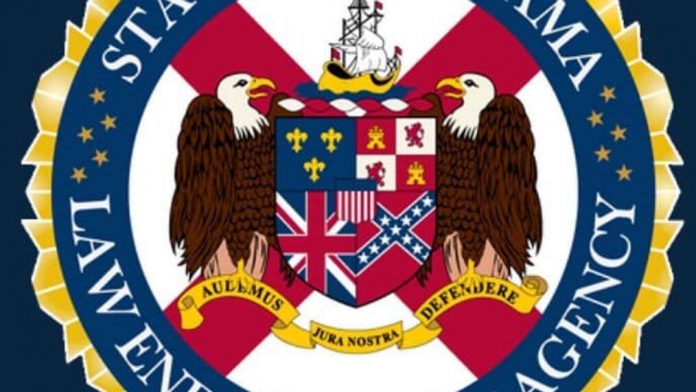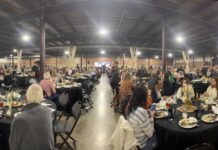MONTGOMERY, Ala. – This May, the Alabama Law Enforcement Agency (ALEA) is teaming up with the
U.S. Department of Transportation’s National Highway Traffic Safety Administration (NHTSA) to remind all motorists that motorcyclist and cyclist safety is everyone’s responsibility. Each year, May marks both National Motorcycle Safety Awareness Month and Bicycle Safety Month ahead of the unofficial start of the summer travel season.
ALEA Secretary Hal Taylor said, “With Alabama’s scenic roadways and warmer weather fast approaching, both motorcyclists and cyclists increasingly take to the road to enjoy a relaxing ride. However, these riders are some of the most vulnerable users on the road and are exposed to dangers those driving vehicles do not experience. All too often, we take for granted how fast a crash can occur. If everyone is vigilant and respectful to other riders and drivers when we are on the roadway, we can all do our part to keep all of our roadways safe.”
Even as ALEA prepared to launch Motorcycle and Bicycle Safety Month, ALEA Troopers responded to and are currently investigating fatal traffic crashes involving one bicyclist and one motorcyclist.
According to statistics from the Center for Advanced Public Safety (CAPS) at the University of Alabama, 44 individuals on bicycles have been fatally injured and 207 individuals were seriously injured in traffic crashes between 2018 and 2022. Fourteen of the 44 individuals were killed in 2022. During the same reporting period, 417 motorcycle occupants were killed, 95 of whom were killed in 2022; and a total of 2,248 individuals were seriously injured.
Primary contributing factors in those crashes involving bicycles included “unseen object/person/vehicle,” improper crossing, improper lane change/use and being on wrong side of the road. In crashes involving motorcycles, primary contributing factors included aggressive operation, being followed too closely,
traveling over the speed limit, “unseen object/person/vehicle,” defective equipment, DUI, traveling too fast for conditions and swerving to avoid an animal.
ALEA’s Department of Public Safety (DPS) Director, Colonel Jon Archer said, “Throughout the month of May the Agency will be sharing safety tips and spreading awareness of bicycle and motorcycle safety for all drivers and cyclists. We ask motorists to be especially aware of conditions around them, maintain a safe distance when following motorcycles, check their mirrors and blind spots before changing lanes and pay particular attention when making left turns across traffic.”
Before leaving home, ALEA urges adults to review with everyone in the family the following safety points:
Bicyclists/motorcyclists
- Pre-ride inspection: Check tires and other equipment prior to leaving home to ensure your vehicle (a bicycle is considered a vehicle when it is operated on a roadway) is in good working condition.
- No helmet, no riding: Like seat belts, helmets are a simple and effective way to reduce the likelihood of injury or death during a traffic crash.
- Safety in numbers: Studies show drivers are more likely to see bicyclists when they ride in groups.
- Bicyclists should look for their lanes: Does your city or neighborhood have lanes designated for bicycles? Be sure you and your family are familiar with the area and are prepared to ride safely even when there are no bike lanes.
- Follow the rules of the road: Even bicyclists and motorcyclists are responsible for riding safely and obeying the laws.
- Pay attention: Even on bikes, a distraction is anything that takes one’s focus off the task of riding. Put away phones and anything else that can be distracting.
- Watch for others on the roadway: Watch for other vehicles and expect the unexpected. They may not see you.
- Look out for grass clippings on roadways: It may be slippery and cause crashes.
- Small animals, particularly in neighborhoods, can be a hazard: A small dog or other small animal may jump out into the roadway, either in front of the bike or try to grab at a biker’s legs or feet.
- Be seen to be safe: Wear high-visibility gear, including reflective clothing or other items to ensure you are as visible as possible – particularly at night.
Other motorists
- Pay attention: Put down the phone, leave the stereo and/or navigation system to a passenger, and avoid eating or drinking while driving. Focus on the task of driving.
- Expect bicycles and motorcycles: It is springtime in Alabama, with lots of warm and sunny days, perfect for riding. Assume you will encounter individuals riding a bike or operating a motorcycle and give them space.
- Don’t forget the 3-Foot Rule: It is illegal not to give bicyclists at least 3 feet of space as you pass them whether there is a designated bike lane. And it wouldn’t hurt to slow down when passing. That includes city streets and country roads.
- Watch – and listen out – for motorcycles: This is especially important at intersections when motorcyclists may be preparing to make a left turn.
Not too close: Never tailgate a cyclist or motorcyclist. Create a buffer between your vehicle and theirs.






























